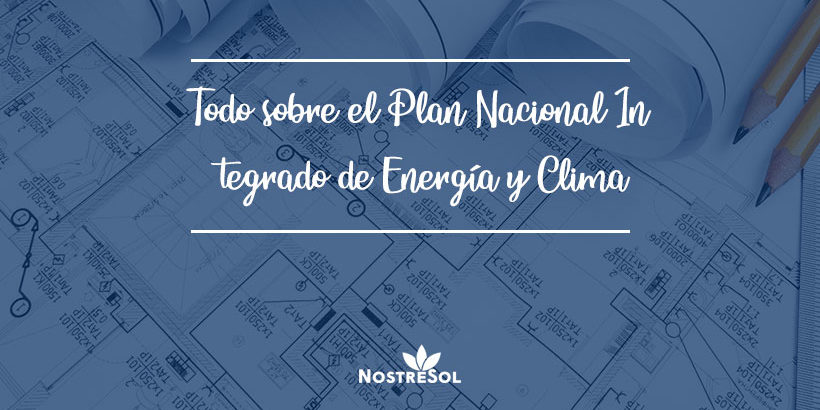When we talk about the PNIEC, we are referring to the National Integrated Energy and Climate Plan 2021-2030. The development of these plans follows the forecasts for Regulation (EU) 2018/1999 of the European Parliament and of the Council of 11 December 2018 on the governance of the Energy Union and Climate Action. Today, we’re going to tell you all about the PNIEC 2021-2030.
The Regulation provides that each Member State should communicate to the Commission on a regular basis an integrated national energy and climate plan. In this way, the PNIEC 2021-2030 is part of the “Strategic Framework for Energy and Climate: a proposal for Spanish modernization and job creation”, approved on 22 February 2019 in the Council of Ministers and which also includes the preliminary draft Law on Climate Change and Energy Transition and the Fair Transition Strategy.
What does PNIEC 2021-2030 set?
The answer to this question is that this plan sets out the main lines of action on energy and the environment by 2030. Its main objective is to reduce greenhouse gas emissions and achieve a sustainable and efficient economy. All this, balancing it with improving health and the environment and in line with the commitments made in the Paris Agreement.
The 2021-2030 PNIEC will serve as a reference framework for the future authorization of projects subject to environmental impact assessment, as well as other plans and programmes at the state and regional level.
What goals does it set?
National Integrated Energy and Climate Plan 2021-2030 represents two distinct scenarios:
- Trend scenario, that is, the one that results from the measures and policies that currently exist in terms of energy and climate.
- Target scenario. This is the one pursued and for which the measures are proposed.
Therefore, the objectives set are based on the following premises:
Decarbonization
With the time horizon set in 2030, it is intended to achieve a decrease in emissions of at least 23% compared to 1990. The long-term goal is for Spain to be a carbon-neutral country by 2050. In order for this to happen, they believe that 42% of the energy will need to come from renewable sources.
Energy efficiency
The improvement is 39.5%. For it to exist, it will be necessary to act in the thermal envelope of 1,200,000 homes, renew the thermal heating and sanitary hot water installations of 300,000 homes per year and the park of public buildings at the rate of 300,000 m2/year.
Energy security
Energy security seeks to ensure access to the resources needed to ensure diversification of the national energy mix. In addition, it aims to reduce dependence on fossil fuels, promote the use of indigenous sources and provide safe, clean and efficient energy. The idea is that the degree of dependence on the outside has decreased to 64% by 2030.
Internal market and energy
The purpose of this line of action is to achieve a more competitive, transparent, flexible and equal energy market. It aims to generate a high degree of interconnection that promotes cross-border trade and contributes to energy security.
Research, innovation and competitiveness
The aim of this premise is to align national policies with international and European objectives in terms of research, innovation and competitiveness. The idea is to coordinate public administrations with other sectoral policies and promote public-private collaboration, along with business research and innovation.
Want to know more about the renewable energy we offer in Nostresol? Do not hesitate to contact us.

